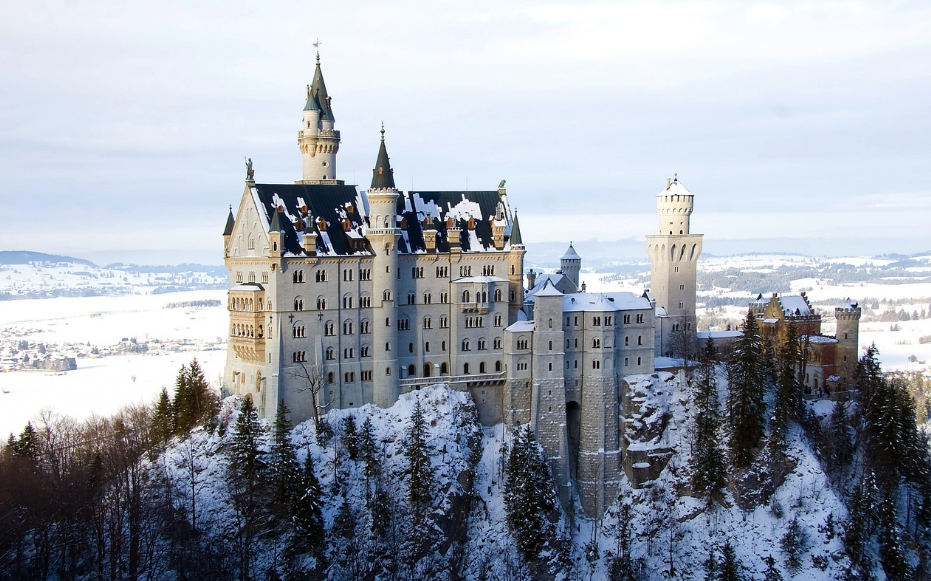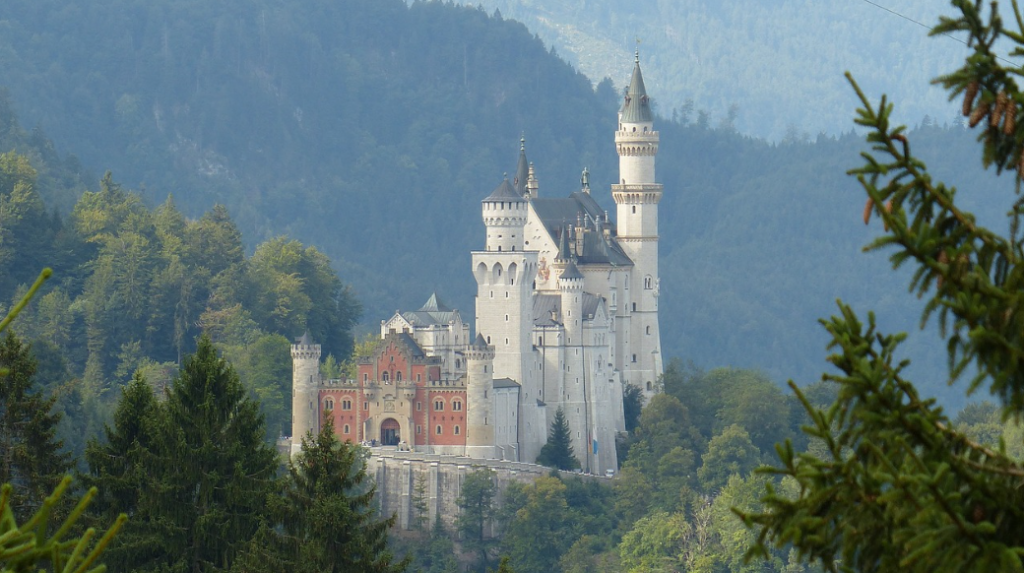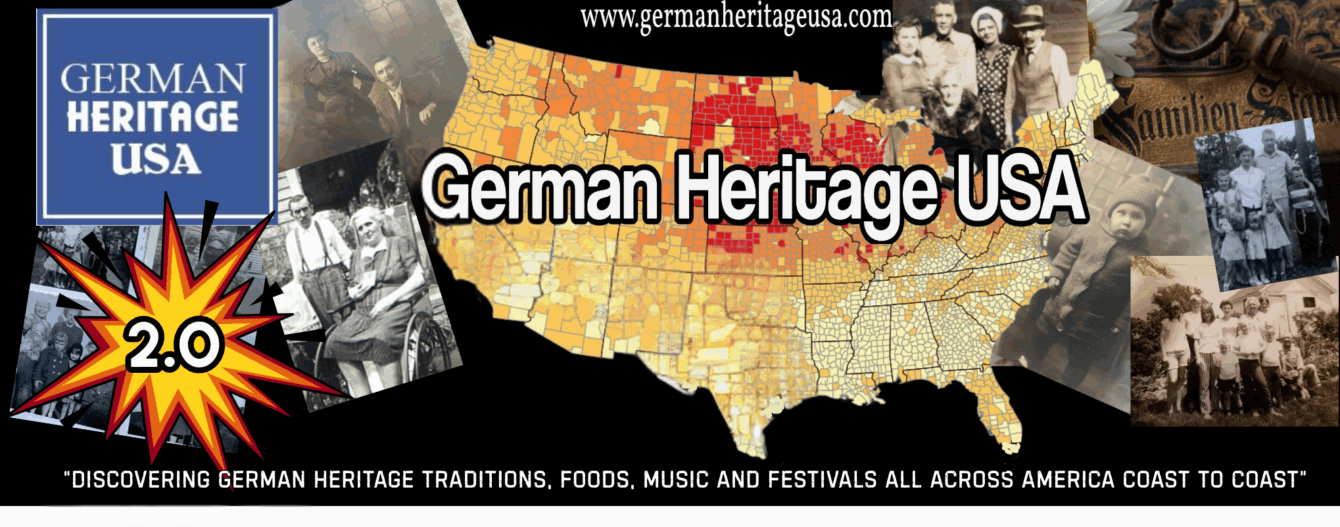The Top 9 German Castles and Fortresses
GERMAN HERITAGE USA | AFFILIATE DISCLAIMER: This post may or may not contain affiliate links which means we may receive a commission for purchases made through links. We will only recommend products that we have personally used or that we truly trust. Learn more on our Private Policy and Disclaimer Page located under our Terms Of Service tab above.
Did you know Germany has over 25,000 castles? That’s more than any other country! These German fortresses show centuries of history and amazing architecture.
Let’s explore Germany’s most stunning castles together. We’ll learn about their secrets and the legends that surround them. Get ready to see the top 9 German castles and fortresses that highlight the country’s rich history and amazing buildings.
Key Takeaways
- Germany boasts the highest number of castles worldwide
- German fortresses range from military structures to royal palaces
- These castles are among Germany’s most popular tourist attractions
- Many German castles have inspired fairy tales and literary works
- German heritage is preserved through castle restoration and tours
Introduction to Germany’s Castle Legacy
Germany is home to a vast number of castles, each with its own story. These structures have seen the country’s ups and downs over the centuries. They were once military bases and royal homes, now they tell us about Germany’s rich history.
The Abundance of Castles in Germany
Germany’s landscape is dotted with castles due to its geography and history. Its location near nine countries and past as separate states led to many fortifications. Today, these castles attract tourists from all over the world.
Historical Significance of German Fortresses
German fortresses were key in history. They were military bases during the Holy Roman Empire. Later, they became grand palaces for the nobility. For example, Wartburg Castle is famous for Martin Luther’s work there in 1521.
Types of Castles: From Military Strongholds to Royal Residences
German castles vary in style and purpose. Some, like Wartburg Castle, are known for their defenses.

Others, like Neuschwanstein Castle, show 19th-century dreams. Visitors can see everything from ancient ruins to lavish interiors.
| Castle Type | Purpose | Notable Example |
|---|---|---|
| Military Stronghold | Defense and fortification | Nuremberg Castle |
| Royal Residence | Luxurious living quarters for nobility | Dresden Castle |
| Romantic Palace | Artistic expression and idealized medieval architecture | Neuschwanstein Castle |
Nuremberg Castle: A Millennium of History
Nuremberg Castle is a key part of Germany’s medieval history. It has been around for over a thousand years, starting in the 11th century. Sitting on a sandstone rock, it’s a big part of Nuremberg’s skyline, showing the city’s rich past.
For many years, the castle was a sign of power and wealth. It was home to German kings and kaisers from the 11th to the 16th century. Its strong location made Nuremberg a key, fortified city in medieval Europe.
Now, Nuremberg Castle draws both history fans and tourists. Its architecture shows how medieval castles changed over time. You can see the deep well, climb the Sinwell Tower for views, and admire the Romanesque Imperial Chapel.
“Nuremberg Castle is not just a building; it’s a living chronicle of German heritage.”
| Feature | Description |
|---|---|
| Age | Over 1000 years old |
| Historical Significance | Home to German royalty for 500+ years |
| Architectural Style | Romanesque and Gothic elements |
| Key Attractions | Deep Well, Sinwell Tower, Imperial Chapel |
The castle’s lasting presence shows Nuremberg’s ability to adapt through time. From being an imperial stronghold to a cultural site today, Nuremberg Castle still fascinates and teaches about medieval castles and German heritage.
Dresden Castle: Art and Architecture Combined
Dresden Castle is a symbol of Saxon royalty and artistic splendor. It’s a 400-year-old landmark that mixes Renaissance and Baroque styles. This makes it a unique architectural wonder in Dresden’s heart.
Royal Residence of Saxon Kings and Queens
Dresden Castle was home to Saxon rulers for centuries. Its grand halls saw the splendor of royal life. From August the Strong’s grand parties to the refined tastes of his successors.
The castle got a stunning Baroque makeover in 1719 for August’s son’s wedding. This made it a powerful symbol of royal power.
Art Collections and Museum Exhibits
Now, Dresden Castle is home to world-class art. It’s part of the Staatliche Kunstsammlungen Dresden. Visitors can see the Green Vault’s 3,000 masterpieces of jewelry and goldwork.
The Kupferstich-Kabinett has over 500,000 drawings, prints, and photos. Art lovers will find works by Rembrandt to Picasso here.
Renaissance and Baroque Architectural Elements
The castle’s architecture is a mix of Renaissance and Baroque styles. This creates a beautiful visual mix. The small ballroom and rebuilt sections after the 1945 bombing show the castle’s preservation efforts.
For a view of Dresden, climb the Hausmannsturm for €5.
| Ticket Type | Price |
|---|---|
| Adult | €14 |
| Reduced | €10.50 |
| Group (10+) | €12.50 per person |
| Under 17 | Free |
Dresden Castle is a journey through time, art, and royal history. From Renaissance fashions to a vast coin collection, it’s a story of Saxon culture.
Heidelberg Castle: Renaissance Ruins with a View
Heidelberg Castle sits 80 meters above the old town. It’s a symbol of German Renaissance architecture. Built in 1214, it shows centuries of European history.
The castle’s history is filled with both glory and loss. It was a marvel during the Renaissance. The Hortus Palatinus, its garden, was called the “eighth wonder of the world” in the 1600s.
But, wars and natural disasters damaged it. French forces burned it in 1689. Then, lightning fires in 1764 left it in ruins.
“Heidelberg Castle is a prime example of the convergence between Gothic and Renaissance styles, making it a unique treasure in architectural history.”
Even in ruins, Heidelberg Castle still draws people. The Friedrich’s Wing, rebuilt in 1900, shows off Renaissance Revival. A new visitor center, opened in 2012, adds modern touches to the old castle.
| Feature | Description |
|---|---|
| Ruprecht’s Wing | Oldest residential part, featuring ribbed vaults and keystones |
| Hall of Glass | Built in 1549, displays Early Renaissance arcades |
| English Wing | Constructed in 1612, inspired by Italian architect Andrea Palladio |
Today, Heidelberg Castle welcomes a million visitors each year. Its ruins offer a mix of history, architecture, and breathtaking views. It’s a top spot for anyone visiting Germany.
Neuschwanstein Castle: The Fairy Tale Icon
Neuschwanstein Castle is a symbol of King Ludwig II’s dream. It’s a neo-Gothic wonder in the Bavarian Alps, finished in 1886. Its stunning look and detailed design attract over 1.3 million visitors each year.

King Ludwig II’s Dream Castle
Work on Neuschwanstein Castle started on September 5, 1869. King Ludwig II wanted a grand retreat, inspired by the Romanesque Revival style. The castle has more than 200 rooms, but only 15 were fully decorated.
The Throne Room shines with 14-carat gold leaf. The king’s bedroom reflects 19th-century Romanticism.
Inspiration for Disney’s Sleeping Beauty Castle
Walt Disney’s Sleeping Beauty Castle was inspired by Neuschwanstein. Its towers and romantic design symbolize fantasy. This link has made it even more famous, as a top German landmark.
Bavarian Alps Panorama
Neuschwanstein sits at 2,620 feet, offering stunning views of the Bavarian Alps. Its location in Schwangau makes it even more special. Nearby Hohenschwangau Castle adds to its historical charm.
| Feature | Detail |
|---|---|
| Annual Visitors | 1.3 million+ |
| Construction Period | 1869-1886 |
| Total Rooms | 200+ |
| Finished Rooms | 15 |
| Adult Ticket Price | 47 euros |
Eltz Castle: A Medieval Time Capsule
Eltz Castle sits above the Moselle River, showcasing Germany’s medieval past. Its stone walls and narrow bridge look like they’re from a fairy tale. This castle is a prime example of Germany’s well-preserved medieval castles.
The Eltz family has kept this castle for over 800 years. It’s one of the most preserved castles in Germany. Visitors get a peek into medieval life through it.
The castle’s history is as captivating as its design. Built in the early 12th century, it was on a trade route. It has parts from three family lines: Eltz-Kempenich, Eltz-Rübenach, and Eltz-Rodendorf. This shows the complex family ties of medieval nobility.
Surrounded by 300 hectares of Eltzer Forest, Eltz Castle takes you back in time. It’s open daily from April to October. Guided tours offer a deep dive into its history. The views of the Moselle River valley are stunning.
“Eltz Castle is not just a building; it’s a living piece of history that has stood the test of time.”
Despite a fire in 1920, Eltz Castle has been well-kept. The 2012 restoration ensured it will continue to amaze visitors for years.
German Heritage: Castles as Living Museums
German castles are proud keepers of the nation’s rich history. They give visitors a peek into centuries past. Each castle has its own story, from royal homes to military forts.
Preservation Efforts and Restoration Projects
Keeping castles in good shape is a big deal in Germany. Experts work hard to keep these buildings standing. With 38 World Heritage sites, many castles, they make sure history stays alive for the future.
Educational Value of Castle Tours
Castle tours make history exciting. You can see royal rooms, climb towers, and walk through old halls. At Marienburg Castle, you can even go back in time with costume tours.
Cultural Events and Festivals
Castles are perfect for cultural events. You can enjoy music, art, and medieval fairs. Wartburg Castle, for example, welcomes half a million visitors each year with its festivals.
| Castle | Unique Feature | Visitor Experience |
|---|---|---|
| Neuschwanstein | White limestone cladding | Fairy tale atmosphere |
| Eltz | 900 years old, 40 meters tall | Medieval time capsule |
| Heidelberg | Panoramic view of Neckar River | Romantic ruins exploration |
German castles are more than just pretty views. They connect us to the past, teach us, and host amazing cultural events. By saving these castles, Germany keeps its history alive for all to enjoy.
Hohenzollern Castle: Ancestral Seat of Prussian Royalty
Hohenzollern Castle sits atop a mountain at 855 meters high. It’s a symbol of Prussian royalty. Located 50 kilometers south of Stuttgart, it offers views up to 100 kilometers on clear days.
The castle was built between 1846 and 1867. It’s the third castle on this site. Over 350,000 people visit each year. It survived a 5.7 magnitude earthquake in 1978 and took until the mid-1990s to repair.
Hohenzollern Castle is more than just history. Since 1952, it hosts summer camps for kids. In 2015, it was a filming location for “A Cure for Wellness,” showing it’s still popular today.
Now, the castle is owned by two Hohenzollern family branches. Visitors can take guided tours. They can see hundreds of historical artifacts and enjoy the views.
FAQ
Why does Germany have so many castles?
Germany has about 25,000 castles. This is because it has nine neighboring countries and was once divided into many states. Castles were used as defenses during the Holy Roman Empire.
What architectural styles can be seen in German castles?
German castles show many architectural styles. You can see medieval strongholds, romantic palaces, and even fairy tale castles. Each style reflects a different time and purpose in history.
What is the significance of Nuremberg Castle?
Nuremberg Castle is over 1000 years old. It was a key castle in Europe. It was home to German kings and emperors, making Nuremberg very fortified.
What makes Dresden Castle unique?
Dresden Castle is 400 years old. It was a royal residence for Saxon kings and queens. Today, it’s an art museum with works by Rembrandt and Picasso, showing Renaissance and Baroque styles.
Why is Heidelberg Castle known for its ruins?
Heidelberg Castle is from the late 1100s. It’s famous for its Renaissance architecture. Despite being damaged, it hosts festivals and concerts, showing its enduring spirit.
What is the significance of Neuschwanstein Castle?
Neuschwanstein Castle was built in the 1800s. It’s a fairy tale castle on a cliff. It inspired Disney’s Sleeping Beauty Castle, making it a famous German landmark.
Why is Eltz Castle considered a medieval time capsule?
Eltz Castle is well-preserved since the 1600s. It’s kept unchanged by the original family. It’s a rare look into medieval times.
How do German castles contribute to cultural preservation?
German castles are preserved and restored to keep their history alive. Tours and events at these sites educate visitors about German culture. They bring history to life for today’s audiences.
What makes Hohenzollern Castle unique?
Hohenzollern Castle sits on a mountain, offering stunning views. It’s owned by the Hohenzollern family and has many historical artifacts. Guided tours let visitors explore its rich history and royal connections.
Source Links
- The Best Castles in Germany – https://www.greatvaluevacations.com/travel-inspiration/unique-castles-in-germany
- Top 10 Best Castles in Germany: Must See German Castles – https://www.bigboytravel.com/europe/germany/topcastles/
- 22 Medieval Castles to See Along Germany’s Middle Rhine River – The GloveTrotters! – https://theglovetrotters.com/destinations/middle-rhine-river-castles/
- Germany’s Castles & Cathedrals | Road Scholar – https://www.roadscholar.org/find-an-adventure/19454/The-Best-of-Germany-Grand-Cities-Castles-and-the-Romantic-Rhine
- WARTBURG CASTLE: A SIGNIFICANT CULTURAL LEGACY – https://www.discovergermany.com/wartburg-castle-a-significant-cultural-legacy/
- Nuremberg Now – https://www.nbg-now.com/history/
- Getting to know Nuremberg – https://www.stripes.com/travel/getting-to-know-nuremberg-1.94639
- Nürnberg is near – https://www.jewishtraveler.co.il/nurnberg/
- Culture in Dresden – https://en.wikipedia.org/wiki/Culture_in_Dresden
- Residenzschloss – https://www.skd.museum/en/visit/royal-palace/
- Heidelberg Castle – https://en.wikipedia.org/wiki/Heidelberg_Castle
- Castle: Staatliche Schlösser und Gärten Baden-Württemberg – https://www.schloss-heidelberg.de/en/castle
- History of design: Staatliche Schlösser und Gärten Baden-Württemberg – https://www.schloss-heidelberg.de/en/interesting-amusing/history-of-design
- Neuschwanstein Castle – https://en.wikipedia.org/wiki/Neuschwanstein_Castle
- Exploring the majestic interior of the fairy-tale castle – https://www.radiustours.com/blog/inside-neuschwanstein-castle/
- Visit Neuschwanstein Castle in Germany? – https://neuschwansteintickets.com/
- Eltz Castle – The beautiful fairytale castle (Germany) – https://one-million-places.com/en/germany/eltz-castle-the-beautiful-fairytale-castle
- Castles in Germany: Medieval Fortresses, Burgen, Festung, and Schlosser, Part 1 – https://www.silverhawkauthor.com/post/castles-in-germany-medieval-fortresses-burgen-festung-and-schlosser-part-1
- German Cultural Heritage – https://www.mawista.com/en/blog/germany/german-cultural-heritage/
- 16 castles and palaces: highlights in every German state – Germany Travel – https://www.germany.travel/en/royal-palaces-castles/16-highlights-in-germany.html
- Wartburg Castle – https://whc.unesco.org/en/list/897/
- Hohenzollern Castle – https://en.wikipedia.org/wiki/Hohenzollern_Castle
- prussia.eu – The official website of the House of Hohenzollern – https://www.preussen.de/en/
- House of Hohenzollern – https://en.wikipedia.org/wiki/House_of_Hohenzollern
